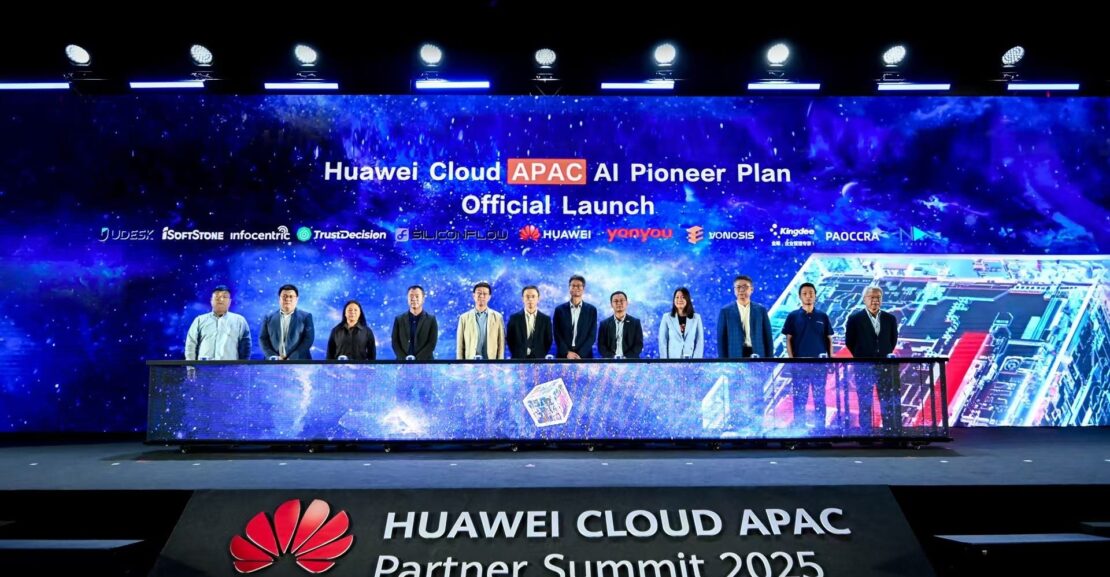On May 9, Huawei Cloud held its 2025 Asia Pacific Partner Conference in Thailand, with the theme “Go Together, Grow Together,” focusing on the evolving role of AI in enterprise transformation. The event brought together over 400 partners from more than 10 countries and regions to discuss ecosystem development and explore opportunities for collaboration in AI deployment.
In her opening speech, Jacqueline Shi, President of Huawei Cloud Global Marketing and Sales Service, emphasized Huawei Cloud’s intent to work with partners across the Asia Pacific region to address emerging demands for AI technologies in sectors such as government, finance, telecommunications, and the internet. Huawei Cloud is refining its AI-related cloud service portfolio to support its partners in adapting to market needs. This includes co-developing industry-specific solutions and identifying practical use cases where AI can provide operational value. The company has also established a competence center in Asia Pacific aimed at providing partners with training, implementation support, and market coordination.
The Asia Pacific region continues to present significant opportunities in the digital economy. Against this backdrop, Huawei Cloud has expanded its infrastructure footprint with five Regions and 18 availability zones, offering low-latency coverage (under 50 ms) throughout the region. The company’s efforts in localization, infrastructure development, and talent training have contributed to the growth of its business operations, which have reportedly increased thirtyfold in the past five years. Huawei Cloud now works with over 2,500 local partners, and in 2024, partner-related revenue saw a 75% year-on-year increase.
Sunny Shang, President of Huawei Cloud Asia Pacific, introduced the Partner Sales Acceleration Program 2.0, which aims to support partners through technology integration, skill-building, and shared resources. The program includes the development of 50 joint industry solutions, distribution of test credits, establishment of new competence centers, increased investment in market development funds, and improved coordination on business opportunities.
To further support specific verticals, Huawei Cloud also launched the Industry Deep-Dive Initiative, targeting the internet, finance, and telecom sectors. The initiative is designed to promote cooperation on sector-focused digital solutions and improve customer engagement through applied innovation.
AI has become a key technology across multiple industries. Joy Huang, President of Huawei Cloud Strategy & Industry Development, outlined the company’s strategy of developing AI-native cloud services, guided by the “Cloud for AI” and “AI for Cloud” approaches. Huawei Cloud has identified six core capabilities to support AI adoption: stable and secure cloud infrastructure, global resource platform KooVerse, cloud-native architecture, foundational AI models, integrated data-AI frameworks, and consistent synergy across cloud, network, and device.
William Fang, Chief Product Officer at Huawei Cloud, elaborated on the infrastructure strategy, highlighting full-stack upgrades such as CloudMatrix, AI-native storage, and distributed cloud solutions. Huawei Cloud also integrates its proprietary Pangu models across areas including product development, data governance, and cybersecurity. These tools aim to help businesses incorporate AI into their workflows. The establishment of new AI computing centers in Asia Pacific is expected to support regional demand.
During the conference, Huawei Cloud introduced the APAC AI Pioneer Plan, which aims to support innovation in AI technology and applications in collaboration with regional partners.
Ken Kang, President of Huawei Cloud Global Ecosystem, noted that ecosystem development will be a central component of AI advancement. Huawei Cloud’s approach focuses on creating a full-stack ecosystem that encompasses model development and application deployment. The goal is to offer partners the tools and support needed to apply AI in practical business scenarios across sectors.
Dale Chen, Director of Partner Development for Asia Pacific, outlined two primary objectives: deepening collaboration in key industries and improving service capabilities. Huawei Cloud’s Asia Pacific partner strategy includes initiatives in targeted marketing, go-to-market support, technical account management, and partner ecosystem development.
Huawei Cloud currently collaborates with over 45,000 partners and offers more than 12,000 products and solutions through its KooGallery platform. At the event, partners such as AIS, Orange Business, SCash Global, MFEC, Silverlake, OnePro Cloud, Automated Systems, Promes, and Chulalongkorn University shared examples of their joint work with Huawei Cloud, including solution co-development and project implementation.
Looking ahead, Huawei Cloud plans to continue working with regional partners to align technological deployments with local needs, with the broader objective of supporting digital transformation across industries in Asia Pacific.

